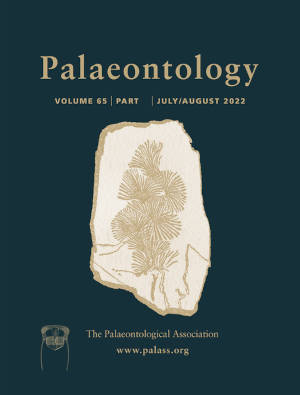Article: Palaeohistological inferences of resting metabolic rates in Concornis and Iberomesornis (Enantiornithes, Ornithothoraces) from the Lower Cretaceous of Las Hoyas (Spain)
Publication: Palaeontology
Volume:
65
Part:
1
Publication Date:
2022
Article number:
e12583
Author(s):
Jorge Cubo, Angela D. Buscalioni, Lucas J. Legendre, Estelle Bourdon, Jose L. Sanz, and Armand de Ricqlès
Abstract
Abstract The bone histology of non-avian theropods such as Troodon, early pygostylians such as Confuciusornis, and neornithines, is characterized by the post-hatching formation of fibrolamellar complex. In contrast, the cortex of enantiornithine birds, like Concornis and Iberomesornis, is made of poorly vascularized parallel-fibred tissue. The cortex of metatarsals of Concornis lacustris MCCM-LH21006 is composed of a thin layer of lamellar endosteal bone and a thick layer of almost avascular parallel-fibred periosteal bone organized into an inner part containing large spherical osteocyte lacunae and a few secondary osteons, and an outer part containing flattened osteocyte lacunae and lines of arrested growth. The cortex of metatarsals of Iberomesornis sp. MCCM-LH09681 is similar to the inner layer described in Concornis. Endosteal bone, and the outer layer of periosteal bone containing flattened osteocytes and lines of arrested growth, are missing in Iberomesornis, suggesting that this specimen is a sub-adult. Here we test statistically a hypothesis suggesting that the absence of post-hatching formation of fibrolamellar bone in Enantiornithes may be a side effect of their low resting metabolic rates (RMR). For this, we construct a palaeobiological inference model including osteocyte lacunar density (explaining a significant fraction of variation in RMR) and phylogenetic eigenvectors as predictor variables. RMR inferred for Concornis and Iberomesornis are significantly higher than those measured in extant ectotherms, but they are not significantly different from the RMR measured in a sample of extant arboreal perching Neornithes of similar body size. We conclude that the ‘intermediate physiological condition’ hypothesis is rejected.
